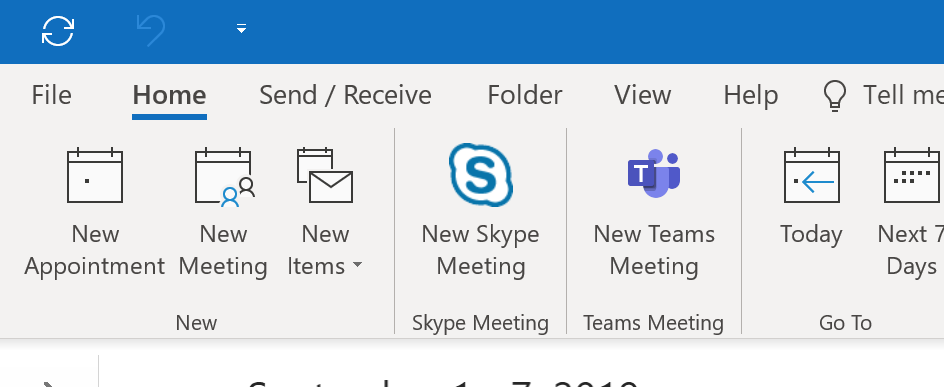Modern authentication in Exchange Online enables authentication features like multi-factor authentication (MFA), smart cards, certificate-based authentication (CBA), and third-party SAML identity providers. Modern authentication is based on the Active Directory Authentication Library (ADAL) and OAuth 2.0.
Hotmail Sign In
- When you disable modern authentication in Exchange Online, Windows-based Outlook clients that support modern authentication use basic authentication to connect to Exchange Online mailboxes. They don't use modern authentication. Notes: Modern authentication is enabled by default in Exchange Online, Skype for Business Online, and SharePoint Online.
- Outlook.com is a free personal email service from Microsoft that doesn't scan your email for the purpose of serving you ads. Automatically file emails and share photos easily.
Outlook 365 Online Web
Each Office 365 email enabled account features an Online Archive mailbox. An archive mailbox is a specialized mailbox that appears alongside the users’ primary mailbox folders in Outlook or Outlook Web App. Users can access the archive in the same way that they access their primary mailboxes. Office 365 is a cloud-based subscription service that brings together a variety of Microsoft applications, such Excel and Word, with powerful cloud services like OneDrive and Outlook, to help you create and share anywhere on any device. Following are the supported Office 365 applications that are available for use: Outlook/Mail/Exchange.

When you enable modern authentication in Exchange Online, Windows-based Outlook clients that support modern authentication (Outlook 2013 or later) use modern authentication to connect to Exchange Online mailboxes. For more information, see How modern authentication works for Office client apps.
When you disable modern authentication in Exchange Online, Windows-based Outlook clients that support modern authentication use basic authentication to connect to Exchange Online mailboxes. They don't use modern authentication.
Notes:
- Modern authentication is enabled by default in Exchange Online, Skype for Business Online, and SharePoint Online.
Note
For tenants created before August 1, 2017, modern authentication is turned off by default for Exchange Online and Skype for Business Online.
Enabling or disabling modern authentication in Exchange Online as described in this topic only affects modern authentication connections by Windows-based Outlook clients that support modern authentication (Outlook 2013 or later).
Enabling or disabling modern authentication in Exchange Online as described in this topic does not affect other email clients that support modern authentication (for example, Outlook Mobile, Outlook for Mac 2016, and Exchange ActiveSync in iOS 11 or later). These other email clients always use modern authentication to log in to Exchange Online mailboxes.
Enabling or disabling modern authentication has no effect on IMAP or POP3 clients. However, if you've enabled security defaults in your organization, POP3 and IMAP4 are already disabled in Exchange Online. For more information, see What are security defaults?.
When you enable modern authentication in Exchange Online, Windows-based Outlook clients that support modern authentication will be prompted to log in again. Further, the Basic Auth login dialog box and the Modern Auth dialog box look very different. See the Outlook and Basic Auth section of the Basic Auth and Exchange Online blog post for details.
You should synchronize the state of modern authentication in Exchange Online with Skype for Business Online to prevent multiple log in prompts in Skype for Business clients. For instructions, see Skype for Business Online: Enable your tenant for modern authentication.
To NAT exempt (nat 0) the IP addresses from the AnyConnect pool, use this on the CLI: webvpn anyconnect ssl keepalive 15 anyconnect dpd-interval client 5 anyconnect dpd-interval gateway 5 3. Determine if the tunneled default gateway needs to be enabled for the setup. The traditional default gateway is the gateway of last resort for non. Secure gateway has rejected the connection Attempt. I am having issues using Cisco AnyConnect Secure Mobility Client (3.1) with my company laptop. Up until yesterday afternoon, I was able to VPN in via AnyConnect. Cisco anyconnect the secure gateway has rejected. See full list on cisco.com. Feb 01, 2021 Symptom: During connection attempt on Windows AnyConnect shows following error: The secure gateway has rejected the connection attempt. A new connection attempt to the same or another secure gateway is needed, which requires re-authentication. Apr 11, 2021 Cisco Bug: CSCvs40531 - AnyConnect 4.8 not able to establish RA SSL to ASA/FTD headend. The secure gateway has rejected the connection attempt.
A user with multiple accounts configured in their Outlook profile might receive an error when they try to connect to their mailbox. For more information, see KB 4516672
Enable or disable modern authentication in Exchange Online for client connections in Outlook 2013 or later
Outlook 365 Sign In
Firefox proton enable. Connect to Exchange Online PowerShell.
Do one of these steps:
Run the following command to enable modern authentication connections to Exchange Online by Outlook 2013 or later clients:
Note that the previous command does not block or prevent Outlook 2013 or later clients from using basic authentication connections.
Run the following command to prevent modern authentication connections (force the use of basic authentication connections) to Exchange Online by Outlook 2013 or later clients:
To verify that the change was successful, run the following command:

See also
